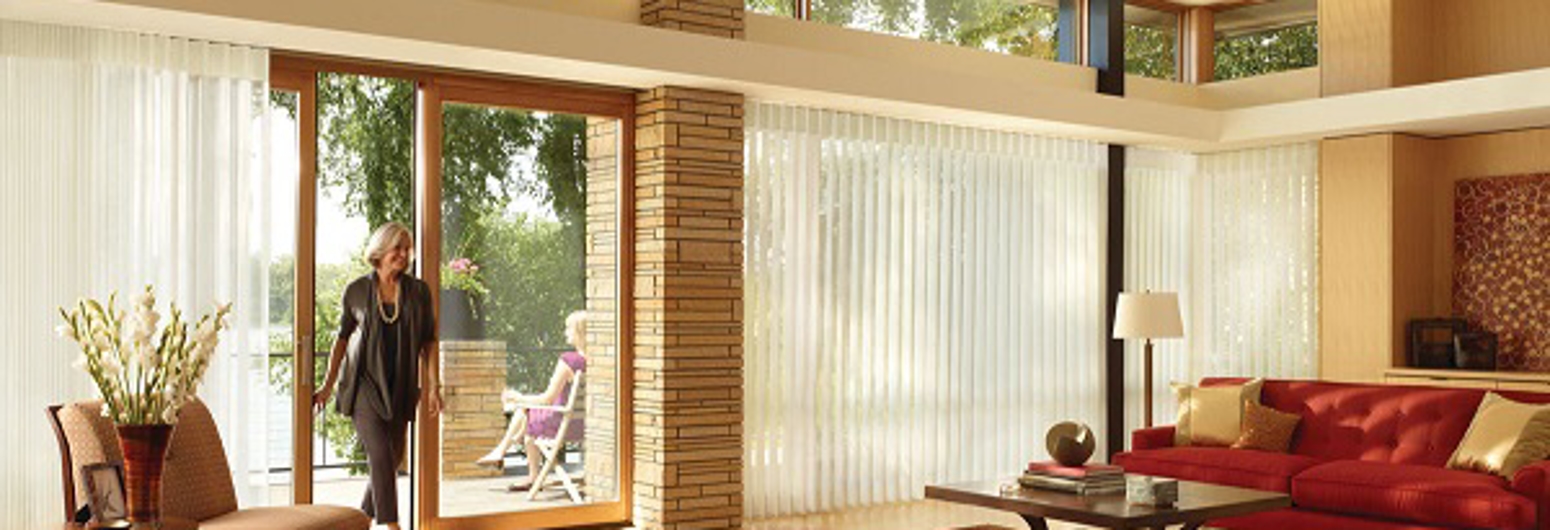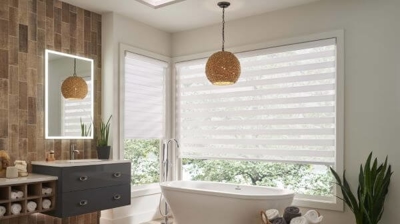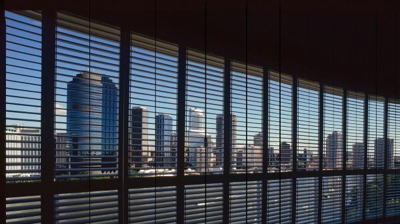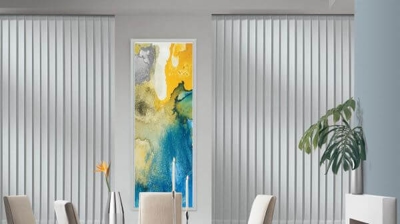In the world of design, trends and styles are constantly changing. Part of what makes design so fascinating and exciting is that it is fluid and always evolving. Common terms and labels are used in order to help with communicating different ideas and themes, but these labels are fluid as well.
Just as no two people see colors the exact same way, design is often subjective to the viewer. Over the years, certain labels have become more defined and design styles have been named based upon certain recurring characteristics. These design styles are broad categories that can be broken down into a wide variety of subcategories. And even some of these subcategories are blended with subcategories of other design styles to create a unique blend or crossover design style of their own.
The primary rule of design is that there are no rules! Rather there are guidelines to help facilitate common understanding of what we are trying to accomplish.
In this article, we have taken broad categories of design styles and given them some definitions and structure to showcase some of the strong attributes and provide examples of what they look like in the world of interior design.
We explore the following types of design aesthetics:
- Craftsman
- Mid-Century Modern
- French Country
- Tuscan
- Farmhouse
Craftsman Design Style
The craftsman style was made popular in North America by Gustav Stickley between 1910 and 1925. It began as an architectural style for homes creating a popular and more affordable alternative to Victorian style houses. As the exterior design changed, the interior design began to change as well.
The craftsman style embraces natural beauty and artisan craftsmanship. It focuses on simple, linear forms with minimal decoration. What this style lacks in ornamentation, it makes up for in attention to detail.
The most important design element in this style is wood which emphasizes natural organic beauty, honesty and purity. Oak is the iconic choice for this style, but pine and maple are also popular options.
While accessories are kept minimal, metal is another choice for accent pieces. Hammered or distressed warm metals such as brass, copper, and bronze are excellent complements to natural wood furnishings, trims, and flooring.
To learn a little more about the history of craftsman style homes, here is an article from Freshomes.
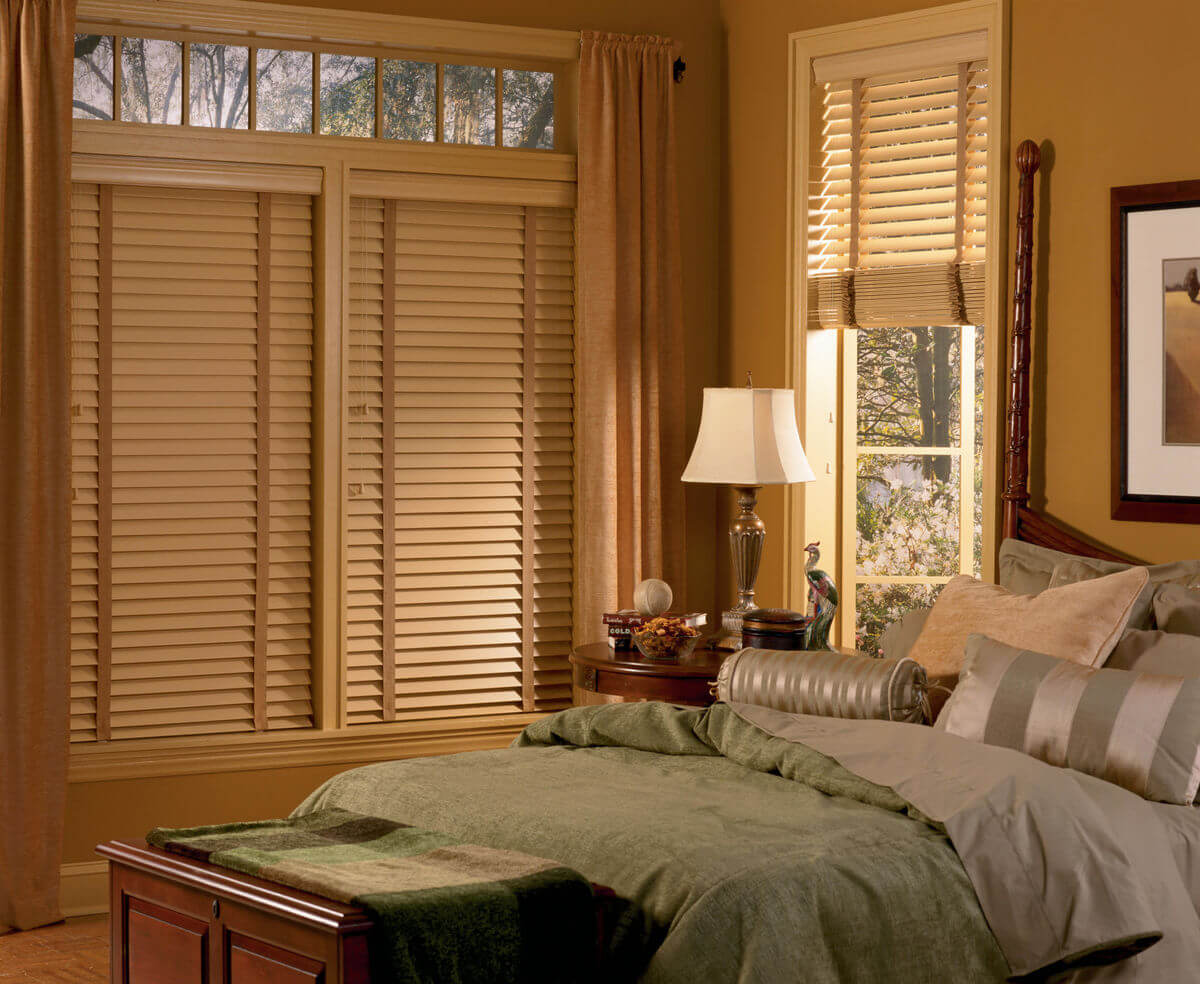
Craftsman Style Window Treatments
Window treatments within a craftsman style home are going to showcase beautiful, natural woods that are either stained or left untreated. Shades may use natural fibers as an alternative to wood. Soft treatments will play with the subtle, muted color palette of natural materials such as stone, bark, leaves, and grass. Some popular window treatment options for craftsman styled rooms would be shutters, wood blinds, vertical blinds, woven wood shades, and cornices.
Shutters are a wonderful option for the craftsman style because of their simple, linear form. Wood shutters add to the natural motif and bring an elegance to any room.
Wood blinds are another wonderful option for craftsman style rooms. They are a beautiful upgrade that will really make your windows stand out.
Another option that really works well on larger windows and sliding doors would be vertical blinds. Vertical blinds provide exceptional functionality and create a beautiful visual effect when placed over these types of windows.They are available in a wide variety of colors and materials, such as wood and textured fabrics, which would fit well with a craftsman design style.
Woven wood shades are another window treatment option that use natural materials. Depending on the weave of the material, these window coverings can allow some natural light to stream through creating a beautiful filtered effect on your windows.
Any of these window treatment options are lovely on their own, but can be truly stunning with a natural wood cornice as a top treatment. Cornices are typically less ornate top treatments that would fit perfectly in a craftsman style room.
Mid-Century Modern Design Style
The mid-century modern design style was developed and became popular from the mid-1940's to the mid-1970's. The architecture of the time allowed for houses to be built with more space between supporting structures. This allowed for rooms to become more open, roofs to become flat instead of peaked, and larger windows to be able to take up more wall space since support beams could be placed further apart without compromising the structural integrity
These changes in architecture design led to changes in interior design. Form follows function and the materials used are highlighted rather than hidden.
Mid-century modern design emphasizes pared-down forms, contemporary patterns, natural materials, and a seamless flow between the inside and the outdoors.
When done well, mid-century design combines functional comfort and chic style and brings together organic and man-made elements.
This design style features open floor plans, split levels, large windows, sliding doors, and flat roofs. Stylized furnishings and statement lighting also play an important role in mid-century modern design.
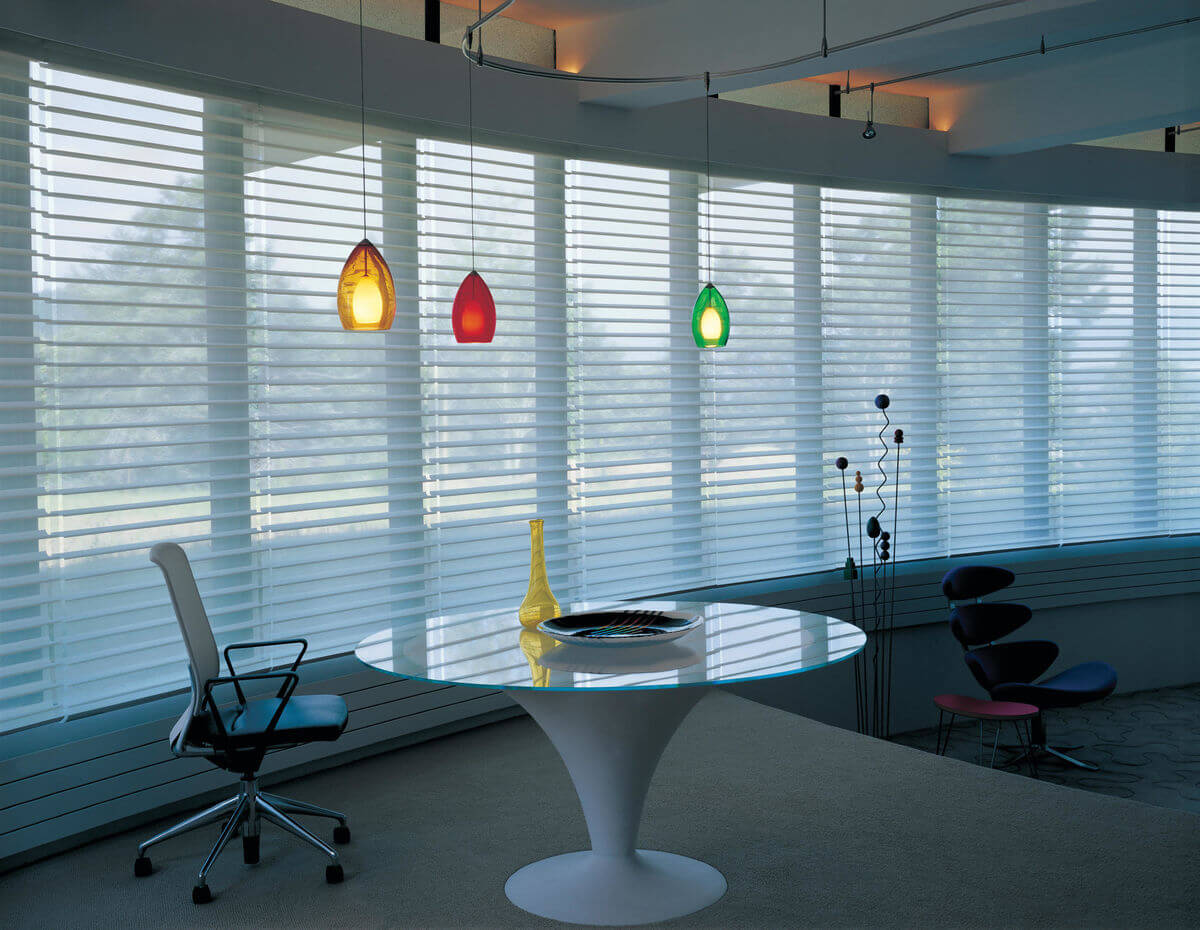
Mid-Century Modern Style Window Treatments
Window treatments that will work with mid-century modern design will be simple and functional. Since large windows typically play an important part in this design style, window treatments are going to be used to serve a specific purpose without detracting from the grandness of the windows.
Simple, horizontal blinds and sheer blinds are going to be a popular choice to provide light control and privacy for larger windows.
If soft treatments are desired, consider bold geometric patterns or contrasting color blocking for drapes or side panels. Again, the goal is to not take anything away from the window itself.
Another window treatment option that lends itself well to mid-century modern design would be a simple roller shade. Roller shades come in a wide range of opacities and can be excellent at providing light control when lowered, but are subtle and unobtrusive when raised.
French Country Design Style
French country design reflects the pastoral, French countryside, specifically from the region of Provence. This style combines practical sturdiness with elegant decor. It is earthy and relaxed.
French country design embraces rough, unfinished, and slightly worn surfaces. It is warm, welcoming, and unpretentious. It embraces a combination of wood, fabric, and wrought iron materials.
The color palette of French country design reflects the rural countryside with warm whites and earthy hues.
For more examples of French country decorating, check out this article from HGTV.
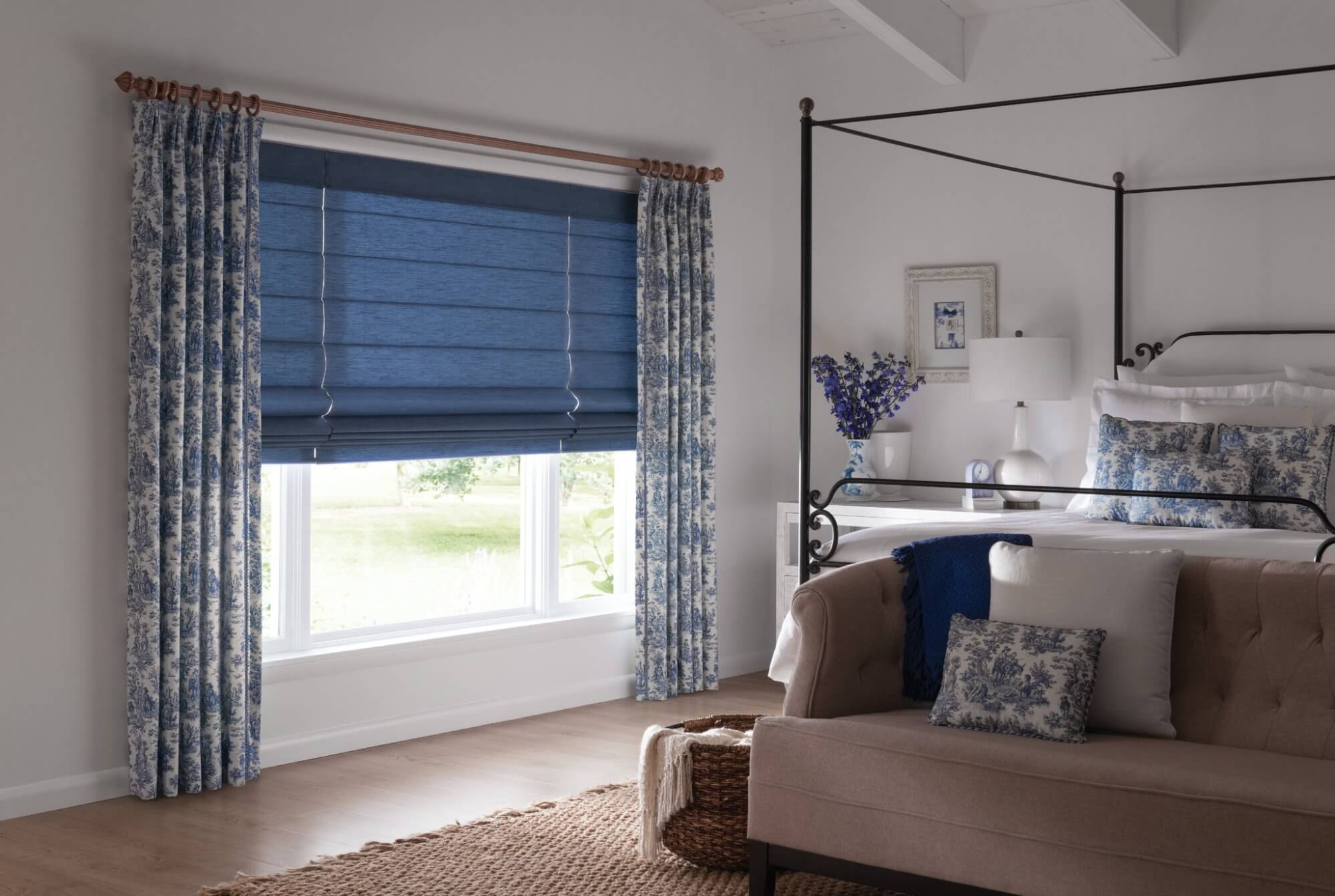
French Country Style Window Treatments
Window treatment options that will work well with the French country style will be soft treatments, Roman shades, sheer blinds, and wood blinds.
The materials for soft window treatments will favor linens, cotton, and toile. Gingham checks, stripes, and florals are popular patterns for drapes, curtains, and fabric top treatments.
Roman shades are another popular choice to add colors, patterns, and texture to the window treatments while also providing light control and privacy.
Sheer blinds are a great fit for this style since they add a simple elegance to any room. Sheers are a great way to filter the natural light coming into a room.
Wood blinds are another popular option for French country designed rooms. They can be painted, stained, or left natural to add to the rustic feel of the space.
Tuscan Design Style
Tuscan design reflects the Italian countryside. The emphasis is on comfort, lack of pretension, and rustic elegance. Outdoor living spaces are designed specifically to add an “al fresco” atmosphere. Water features and greenery are also important additions.
Natural wood materials are sometimes painted or distressed to add to the rustic look of the room. Ceramic and pottery accessories are also popular additions.
Rich, warm, natural color palettes are typically highlighted through painted walls, tile flooring, textiles, and accent pieces.
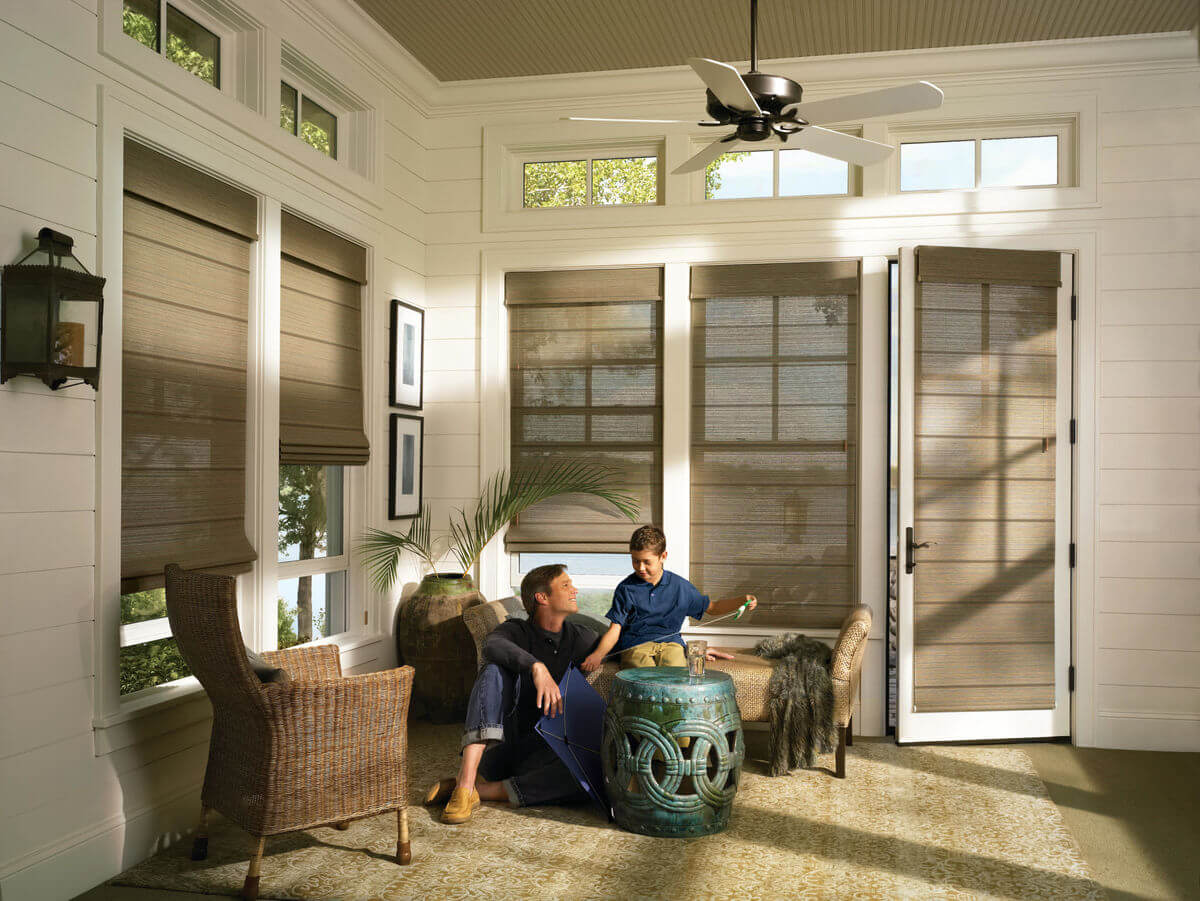
Tuscan Style Window Treatments
When adding window treatments to a Tuscan styled room, consider adding side panels, Roman shades, woven wood shades, vertical blinds, and wrought iron or dark wooden hardware.
Side panels are a great way to add an accent color to the space while making your windows and ceilings look taller. Stick with bold, solid colors to enhance and add warmth to the space.
Roman shades are a very Italian way to dress the windows. Roman shades use a flat piece of material that are raised and lowered over the window. They are a simple, yet elegant way to add textures and color to window treatments.
Woven wood shades are a wonderful way to add a touch of natural wood. Woven wood shades can be made with a range of openness. A looser weave will allow more light to come through, while a tighter weave will block the light.
For large, floor length windows or sliding doors, vertical blinds are an elegant window treatment option to add light control. Vertical blinds will still allow complete functionality and have a sleek, simple design to provide light control.
Window treatment hardware can be simply functional or decorative. For decorative hardware, natural wood or wrought iron will be the perfect fit to bring in simple, natural materials for a touch of flair to a Tuscan style room.
Farmhouse Design Style
Farmhouse design is full of charm and character. It uses simple and practical elements to reflect a simpler time that exudes a feeling of warmth and good old country hospitality.
Farmhouse design is not to be confused with “country kitsch.” When done well, farmhouse design should be an elegant balance of old and new that creates a relaxed and cozy atmosphere.
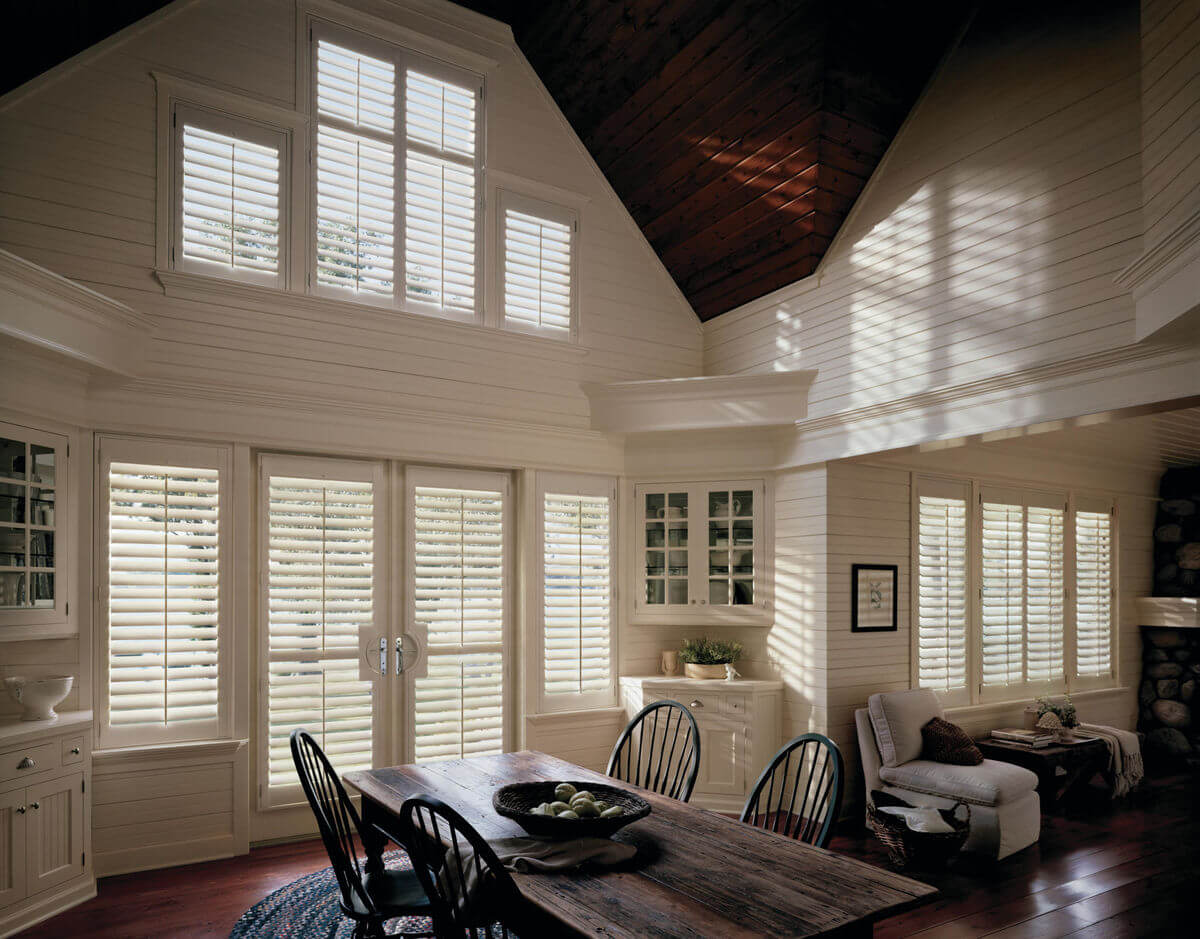
Key Features Of Farmhouse Design
Farmhouse design should be rustic and comfortable. The goal is to create an atmosphere full of warmth and character. Here are some of the main characteristics of farmhouse design:
- Simplistic design reflecting a comfortable yet rustic decor
- Unpretentious style with sentimental touches
- Natural and organic materials such as wood, reeds, wicker, and rattan
- Raw and exposed wood or unfinished materials
- Items that were once painted or stained often show signs of being weathered and worn (ie: peeling paint, sun bleached boards, well weathered wood)
- Mismatched and vintage accessories and furniture that add to the character and charm
- Accessories and accent pieces are typically chosen for sentimental reasons
- Color palettes are warm neutrals, earth tones, and maybe splashes of pastels
- Rustic fabric choices such as burlap or natural woven materials mixed with patterns such as stripes, plaids, and gingham
Window Treatments For Farmhouse Design Styles
While farmhouse design styles love to showcase big open windows, window treatments are still an important addition.
Simple side panels are a great way to emphasize large, gorgeous windows. Adding a little trim or fringe to the edges of these soft treatments is a beautiful and dynamic design element.
Shutters are a staple of farmhouse design. Shutters have timeless, homey quality that never goes out of style. Plus they can be natural wood, stained, or painted to enhance the color palette of your room.
Woven wood shades are another beautifully simple window treatment that will enhance the rustic feel of the space while adding light control and privacy to these windows when needed.
Curtains are a signature look for any farmhouse styled space. These can be the full length of the window or they can be “cafe curtains” that are mounted in the middle of the window.
The fun thing about curtains is that there are so many fabrics to choose from! From light and airy sheers to solid colors to fun plaids or gingham prints, the possibilities are practically endless. Top these off with a colorful valance or a repurposed wood cornice to bring your farmhouse decor together.
Conclusion
We hope this gives you a little more understanding of these five popular design styles. Remember that these are just five of the many design styles out there. The key is to find the main design elements that reflect your own style and personality and allow them to shine throughout your space.
We know there are so many other design styles to explore and we would love to dive into several more of these styles at a later time. If you are curious about which of these five categories fit with your personality and style, take our quick Design Style Quiz and find out!
You may already have an idea of what your personal design style is, or you may be pleasantly surprised by the results. Remember to consider that your design style is an extension of all aspects of your life - where you come from, where you are, and where you are going. Allow yourself to see the elements of these design styles that are reflected from your life experience.
No matter what your design style is, window treatments are a pivotal piece to any living space. The right window treatments will enhance the overall decor of the room and make it feel alive. Window treatments should bring balance and order to your rooms while also adding to decor and creating a statement. Our Gotcha Covered Designers are experts at taking your windows and adding a “wow” factor that you never realized was missing!
With such a wide variety of styles to choose from, working with a Gotcha Covered Design Expert is a wonderful way to get started. They have just the right tools to help you hone in on your own unique design style and find the perfect window treatments to fit within that style.
Are you looking to add new window treatments to your home or workplace? We have a wide selection of amazing window treatments from blinds and shutters to shades and draperies! Be sure to reach out to us at (888) 650-6187 or schedule a free design consultation to see what our Gotcha Covered Design Team can do for you!
 About the Author: Brooke Carr, Gotcha Covered
About the Author: Brooke Carr, Gotcha Covered
Brooke joined the Gotcha Covered family in 2018 as the Social Media Coordinator. She works closely with our corporate teams and our Gotcha Covered franchisees to develop insightful and helpful content for our brand.
